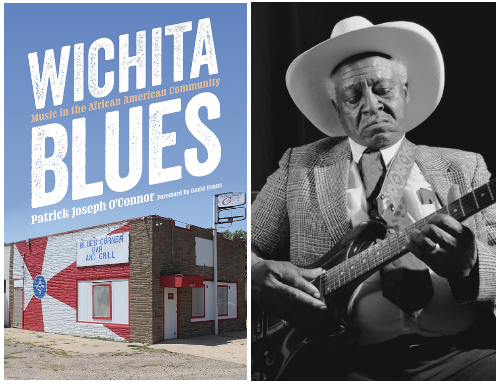“Wichita Blues: Music in the African American Community” by Patrick Joseph O’Connor (2024, University Press of Mississippi, 282 pages, $30 on Amazon)
The traditions and history of the blues as a music form have been well-documented in some regions of the United States. The new book “Wichita Blues” does the same for the genre in our area.
Author Patrick O’Connor is a blues musician, researcher and lecturer in the Wichita area dating back to the late 1960s. Over the last 30 years, he interviewed 19 African American musicians who contributed to the formation and development of the early Wichita music scene. The interviews have previously been incorporated into an exhibit at The Kansas African American Museum and articles in The Active Age.
After a foreword by blues scholar David Evans of the University of Memphis, the book starts with the early influences and origins of blues music. Details of social and economic trends have been included to help explain the systematic migration of the genre across the country. The book also documents early musical performances in Kansas, including the touring minstrel and black cowboy shows that existed prior to blues.
The first blues and jazz shows in the area were touring acts that had short engagements. In time, blues musicians started moving to Wichita for a variety of reasons. Interviews with musicians who were present from the 1930s through the 1960s describe this history. These performers provide insight into the motivation and personal interactions that each personally experienced.
The interviews also document details about the clubs, proprietors, promoters and booking agents active during this era. Some of the local talent of that time managed to gain the attention and interest of touring artists and recording labels. Some were hired to perform with these acts, and a few managed to have their music recorded. A few well-known artists who stayed in Wichita for periods of time during this era are mentioned as well.
The north side of town had a vibrant club scene that began to integrate during the 1960s. Many of the interviewed musicians played roles in the integration of the Wichita music scene and mentoring young musicians in subsequent decades. The book concludes with interviews from a number of area musicians who were active in later decades and provides insight into their experiences performing in Wichita in the post-1960s era.
The book comes alive once it gets into the interviews and was an entertaining read from that point forward. It will be enjoyed by fans of Wichita history and anyone interested in the origins and development of the local music scene.
O’Connor has book readings and signings scheduled from 2-4 p.m. Oct. 13 at the Wichita-Sedgwick County Historical Museum and at 7 p.m. Nov. 22 at the new westside Barnes & Noble, 2441 N. Maize.
Lynn Avants is a Wichita musician.








